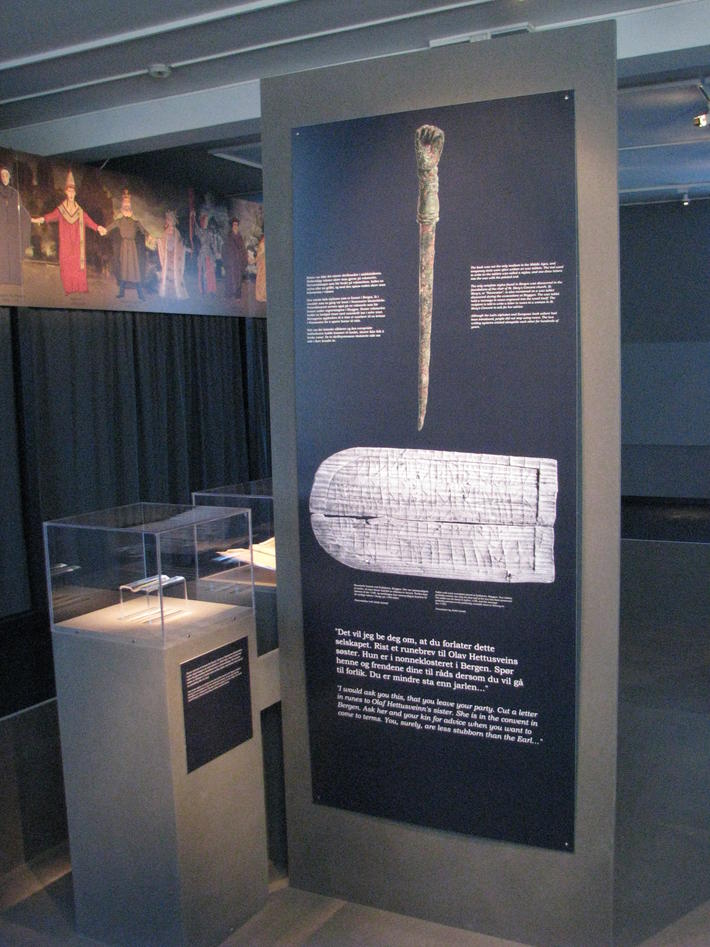Fragments of the Past
A beautiful treasure is on display in the exhibition "Fragments of the past" in Bergen Museum; a stylus– or slate pencil- originally used at Nonneseter Monastery in Bergen. What purpose did it serve and how was this writing stick used?
Main content
A visit to the exhibition Fragments of the Past, at the Cultural History Collections, will provide you with more information about these objects and their stories. The exhibition will remain open until the end of 2012.
Nonneseter
The remains of Nonneseter lie amid the most crowded junction in Bergen. With the help of material from various archaeological excavations, researchers have formed a picture of the activities here: The monastery that was originally situated between today’s bus and railway station was a prosperous St. Benedict monastery, that is, a community for women. The monastery of Munkeliv which was located on the other side of the town centre, at Klosteret on Nordnes, was reserved for men. The monasteries were caretakers of the very new cultural movements coming from Europe; they engaged in, among other things, a written culture that this beautiful writing stick bears witness of.
At today’s Nikolaikirkeallmenning in Bergen, there was a church named Nikolaikirken. Few know that this church shared features with the former glories of Constantinople. While Sigurd Jorsalfar was travelling abroad, his brother was busy with the building of the city of Bergen, inspired by the Eastern Roman emperor.
Collaboration
The exhibition Fragments of the Past is the result of collaboration at the University of Bergen between the Centre for Medieval Studies and Bergen Museum. The project comprises an exhibition, lectures, and a book, providing titbits from the interdisciplinary research programme Periphery and Centre in Medieval Europe at the Centre for Medieval Studies. The exhibition shows several, significant objects from the museum’s collections, and it conveys simultaneously how researchers use fragmented source material in order to give an overall picture and understanding of this long epoch in the history of Europe.
The exhibition has been produced by Bergen Museum. Design by exhibition architect Anne Aspen.
Changing themes
he exhibition is part of a dissemination process that will extend over the next two years. Every spring and autumn, the exhibition will be supplemented with new themes and objects, and lecture series in spring and autumn will elaborate on these themes.
This spring 2011, the central themes in the exhibition will be Monastery and Knowledge, and the Byzantine Empire and the Nordic Countries. The themes for autumn 2011 will focus on State and Royal Power, and Law and Justice, coinciding with the celebration of the 750th anniversary of Håkonshallen. Next spring, the last two themes, Penance and Reconciliation, and Sagas and Saga Writing will be presented. According to plan, the exhibition will remain open until the end of 2012.



